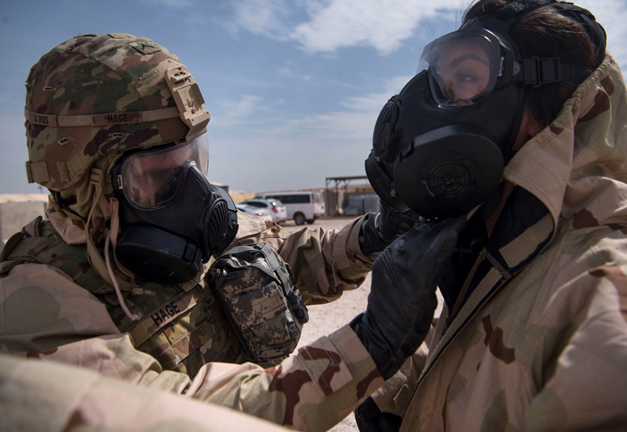Sources of radiation exposure are primarily medical imaging, therapeutic procedures, or nuclear power plant accidents. However, the increased availability of radioactive materials has magnified the likelihood of an attack by improvised dispersal devices (i.e., "dirty bombs") and threats of nuclear weapon use are rising in many regions. Exposure to such explosive weaponry can harm an individual via primary through quaternary blast effects, but individuals within a larger radius may experience painful and dangerous damage to the skin termed cutaneous radiation injury (CRI) – a quinary blast effect. The current management for a suspected CRI is to monitor the external skin for reddening (erythema) or shedding (moist desquamation) to inform treatment. This approach is insufficient because external signs of damage are rarely apparent until two weeks after exposure. Greater understanding of CRI signs and the underlying damage is therefore needed to guide a more immediate therapeutic course of action, to triage patients in mass casualty events, and to develop effective therapies.
A team of Wake Forest researchers teamed with KeraNetics, LLC, to develop a porcine model of CRI with which to investigate the impact of β-particle dose on visible and molecular changes to the skin over time.1 The doses were chosen to be within a range comparable to that expected during a radiological terrorism event, and the use of pig skin allows more direct comparison to human injuries relative to other animal models used in the past. Specifically, the group exposed small areas of porcine skin to varying doses of ionizing radiation (16-42 Gy), which penetrates to a maximum of 4 mm below the surface, using a strontium-90 β-particle irradiation device. The skin was visually inspected for erythema and moist desquamation for up to 70 days after exposure. In addition, biopsies from the exposed areas were harvested for biochemical analysis and were compared to skin that was not irradiated.
Erythema and moist desquamation did not reach clinically relevant levels until three weeks after exposure. The extent of both measures peaked approximately 35 days after exposure, and the severity of these symptoms at each time point were dependent on the dose. A dose- and time-dependent effect was also detected in representative tissue sections via histological and immunological analysis; significant pathological changes in the dermis and epidermis were apparent after day 35. There was evidence of substantial protein degradation and oxidative stress, as well as disruption in regulators of normal skin function, in a dose- and time-dependent manner.
The researchers concluded that skin irradiated below 26 Gy can stabilize and likely recover, but at higher levels of β-particle exposure, the underlying structure and vasculature are too compromised to facilitate recovery. The current medical course of action for severely damaged skin is surgical excision with a long, painful grafting process for recovery. Additionally, an understanding of the biochemical changes in CRI can guide medical professionals as to the clinical course of the injury and inform the development and use of therapies prior to visible lesion presentation.

1 Burnett LR, Gabard AR, Robinson M, et al. Biomolecular Analysis of Beta Dose-Dependent Cutaneous Radiation Injury in a Porcine Model. Radiation research. 2019;192(2):145-158.
Your 15 minute session will timeout in approximately 10 minutes.
If you're in the middle of entering information, please close this warning and save your progress (if possible) or finish up your task.
If your session fully times out, you will lose any un-saved work.
Your current Blast Injury Research Program session has expired.
Your next click will take you away from the private area, and you will lose any work you have in-progress.
Please enter your email address, and try again.